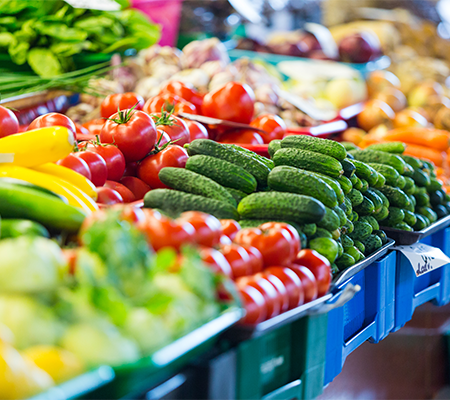
Fresh and frozen produce offer great nutritional value, but can differ slightly.
It’s no secret – fruits and vegetables are often the main ingredients of a healthy diet. But should you be stocking up in the produce section of the grocery store, or heading to the frozen aisle? Kari Mizgalski, Marshfield Clinic Health System clinical dietitian and diabetes educator, offers this advice.
The produce process
Commercially-produced fresh fruits and vegetables are often picked before they are ripe. That gives them time to ripen during distribution and any wait time on the grocery store shelves. The longer they sit between harvesting and consumption, the more nutrients are lost.
“This is not a suggestion that fresh produce lacks nutritional benefits,” said Mizgalski. “Fresh fruits and vegetables are very healthy and should be part of everyone’s diet. But they’re at their best when eaten right away.”
Mizgalski adds that fresh, local produce is ideal. Getting it from the farmer’s market, a community-supported agriculture program or your garden will usually help ensure you’re consuming produce at peak ripeness.
Frozen produce, on the other hand, is picked at peak ripeness and processed immediately. This locks in nutrients. Some vegetables are blanched (cooked briefly in hot water), which can reduce some vitamin content. For the most part, frozen produce retains its nutritional value, especially when eaten within a year.
“It’s a safe bet that any frozen fruits or vegetables you buy are going to be packed with a lot of vitamins and minerals,” Mizgalski said. “Taste and texture may be the compromise. For example, eating a frozen peach slice isn’t the same as biting in to a juicy, fresh peach.”
How does canning compare?
Canned fruits and vegetables have a couple differences than their counterparts. Canned produce often has added salt and/or sugar for preservation. As we all know, too much of these things in one’s diet can impact wellbeing. Canning also requires high heat, which can reduce levels of vitamins B and C.
“On the bright side, canning does preserve mineral content as well as overall nutrition like carbohydrates, protein and fat,” Mizgalski said. “For canned tomatoes, lycopene content actually increases during the canning process. Lycopene is the compound that gives tomatoes their red color, but also may decrease one’s risk for some diseases, including cancer.”
The bottom line
Variety is key when it comes to fruits and vegetables. Diversifying your freezer, refrigerator and cupboard is ideal.
“Fresh vegetables are typically more versatile than frozen,” Mizgalski said. “But frozen can be easy to use because they don’t need to be washed or chopped. In my family, we keep all fruits and vegetables on hand. We eat the fresh first, and use frozen or canned as a backup or for a quick addition to a meal on a busy weeknight.”
If you’re looking for healthy recipes that may help incorporate more fruits and vegetables in your diet, check out these recipes.


Your article does not include information on fresh produce that is grown in your own garden. Compared to grocery store produce it is usually eaten much closer to the harvesting date which should improve the quality of vitamins and minerals. Also, many home gardeners avoid using chemicals for weed and insect control which is not typically the case with commercial growers, so there is an added benefit there. Your comments, please.
Hi Judy, This is a good point. We have added additional information regarding this: "Mizgalski adds that fresh, local produce is ideal. Getting it from the farmer’s market, a community-supported agriculture program or your garden will usually help ensure you’re consuming produce at peak ripeness." -Thanks, Jordan